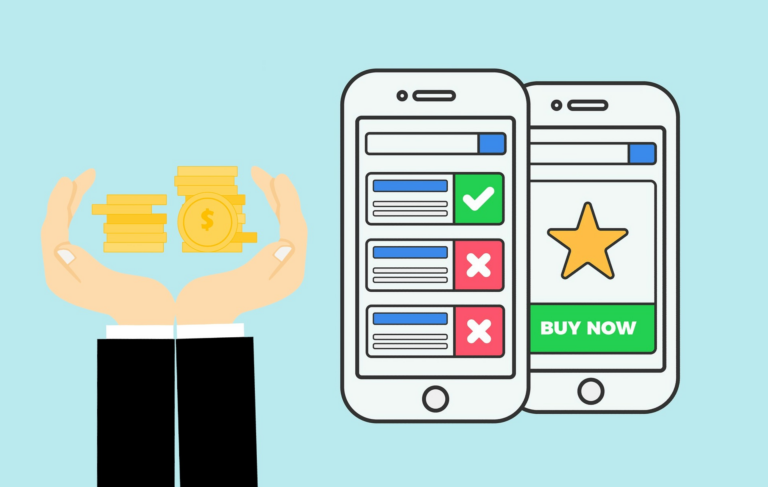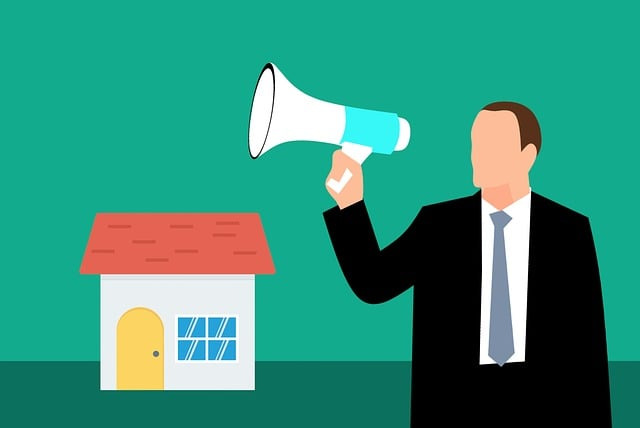A vital way of improving your Google Ads performance is by choosing the right bid strategy. This, however, is easier said than done, so wich Google Advertisements Which Bidding Strategy Is Best, Lets dive in and find out!
In this article, I’ll explain what a bidding strategy is and the spectrum of strategies that exist. I’ll also go through 5 different strategies and explain which strategy is suitable for which type of business and campaign.
You can also watch our video about the best Google Ads bidding strategies for your business on YouTube. Feel free to subscribe to the channel for marketing and Google Ads bidding tips & more!

What Is A Bidding Strategy?
A bidding strategy goes hand in hand with a campaign that helps you accomplish your goals with Google Ads, The Google Ads platform is built around auctions, and what do you do at an auction? You bid!
For example, if a person searches for “environmentally friendly pet shop”, there might be ten different eCommerce businesses that identify as green pet shops and want to get traffic from that search phrase. They will be bidding on this search phrase with the goal of being the first result on Google’s search results page.
To accomplish this, they want to have a strategy for how to approach these auctions within the bidding system— that is, a bidding strategy.

A Spectrum Of Google Ads Bidding Strategies
One great way of imagining the types of bid strategies is by visualizing a spectrum.
Different Bidding Stratergies can be placed on a spectrum, targetiong the top, middle and bottom sales funnels.

The Top of the Funnel
On one end of the spectrum, you’re focused on the top of the funnel. At the top, you’re thinking of things like the target impression, share strategy or maximizing clicks strategy.
The goal of these strategies is for your ads to be seen and clicked on. More clicks don’t necessarily lead to more purchases but higher traffic is never bad, it’s a first vital step to the possibility of more sales. Getting more traffic can also be beneficial for your eCommerce brand awareness.

The Middle of the Funnel
Further down the funnel, towards the middle of the spectrum, the focus is on some kind of conversion, this is often, a contact form or a purchase.
In this middle part of the spectrum, you’ll utilise strategies such as maximizing conversions. This focuses on getting as many conversions as possible, customers making purchases from your eCommerce store or collecting contact information to move people down your funnel.
Another strategy is maximizing conversion value, which can be effective when your eCommerce has several products with different prices. With this strategy, Google recognizes that some of your products are more expensive and tries to get you more of these higher value-conversions.

The Bottom of the Funnel
At the bottom of the funnel, you have strategies such as target CPA (target cost per acquisition). If you’re willing to pay, for example, £200.00 to get someone through the sales funnel and make a purchase, you can set a £200.00 “cost per acquisition,” and Google will try to achieve that.
This is the spectrum of Google Ads bidding strategies available, but which bid strategy should you be using for your eCommerce business?

Which Bid Strategy Should You Be Using?
Naturally, the hardest part isn’t learning about the various strategies but figuring out which one will work for your business.
To understand which bid strategy is suitable for you, I’ll go through what Google Ads wants you to do, why it isn’t always possible, and what to do instead.
If you’d rather spend less time choosing the best bid strategy and more time on other aspects of your eCommerce, you can consider reaching out to a Google advertising expert for creative marketing solutions and management of all Google Ads campaigns.

What Google Wants You To Do
Google Ads reps love to tell you to automate everything. If you’ve set up a Google Ads account or been in contact with a Google Ads rep, you’ve likely noticed how persistent they are about having an automated rather than a manual bidding strategy.
Google Ads recommends switching to a fully automated bidding strategy, such as maximized conversions or a target CPA system. But why?
Compared to, for example, manual CPC bidding, the algorithm of Google Ads’ automated bidding strategies can help you accomplish your goals more effectively or so they say.
An automated strategy can help your eCommerce reach a higher number of conversions, However, there is a caveat to automated bidding strategies.

The Caveat To Automated Smart Bidding Strategies
For the automated bidding strategy algorithm to work, you need to feed it enough data.
Practically, this means that you need to get around 30 to 40 conversions within a 30-day period before switching to a maximized conversions Google Ads bidding strategy.
If you don’t have enough conversions yet, Google’s algorithm has no data to use.
If you have 35 conversions, Google Ads has 35 data points to use to analyze which keywords, types of audiences, and users have the potential to be converted to customers.
The more conversions you get, the more data you have to use, and the better Google gets at investing your money in the right places.

When Automated Bidding Strategies Do and Don’t Work
Google’s automated bid strategies generally only work when you’ve already scaled up your eCommerce business or have enough conversions.
If your online store has products or services that have a cheaper entry point, there’s a higher chance you’ll get conversions more quickly. In this case, you might be able to move from manual bidding to one of Google’s automated bidding strategies quite fast.
However, some businesses are looking to bring in leads that are worth tens of thousands of pounds. In these cases, you might have fewer leads, which means that it’ll take you longer before you can switch over from a manual bids strategy to one of Google Ads’ automated bidding strategies.
What can you do if you don’t have enough conversions to feed the algorithm data? One solution is to look at bid strategies higher up in the funnel, such as maximizing clicks.
5 Bid Strategies For Your eCommerce
Five smart bidding strategies which professional advertising agencies have found effective are maximising clicks, maximising conversions, maximising conversions value, target CPA, and target ROAS.

Bid Strategy 1: Maximize Clicks
Maximizing clicks is one of the strategies that focus on the top of the funnel, and it’s a good option for people that are just starting out with an eCommerce or don’t yet have many conversions.
It tells Google Ads to go into these auctions and try to get you as many clicks as possible. This strategy can help you find cheaply available clicks for people interested in your product of service.
The con of maximising clicks is that it might mean that you don’t bid on some of the better keywords, which are more expensive. Those keyword bids could be the ones that lead to conversions.
This is why you want to move from “top-of-the-funnel” strategies, such as maximizing clicks, to more advanced deeper strategies in the long run.
However, when you are just starting out and don’t have a lot of conversions yet, focusing on the top of the funnel and getting more people through the door is a good starting point.
Important Tip: Set Maximum CPC BIDS
Make sure that you set a max CPC (cost per click) so that Google Ads knows how much you’re willing to spend.
If you don’t do this, Google Ads can go overboard and spend too much, so setting this limit allows you to control the reins on Google, making sure you’re on top of your marketing budget.
For example, you could start by setting the maximum CPC bid limit a bit higher and then gradually lowering it to make sure you stay on budget. That way, you can find the optimal CPC bid limit for your eCommerce.
Bid Strategy 2: Maximize Conversions
When you’ve started getting a higher number of conversions, you can move on to more advanced bidding strategies, like maximizing conversions. In which scenario is maximising conversions the right bid strategy for you?
Maximizing conversions can be a powerful bid strategy for your business if you focus on one product or service with a single value.
For example, this could be an eCommerce with one specific product, which might have variations, but at a similar conversion value or price.
If your business has a single conversion value, your main focus is to get as many of those conversions as possible. That makes a bid strategy like maximising conversions perfect for your Google Ads campaign.
Bid Strategy 3: Maximize Conversions Value
Maximizing conversion value can be an effective bidding strategy for you when you have a broader range of products with different values.
For example, you could have an eCommerce with seven different products, of which some are cheaper and some are more expensive.
Another example could be a B2B service company with a beginner package for £100.00, a pro package for £200.00, and an enterprise package for £1000.00 .
If you use a maximize conversion value bidding strategy across these scenarios, Google Ads will differentiate between your different conversion values. When a £1000.00 enterprise package conversion is made, it will be weighted more by Google Ads than when a 100-pound beginners package conversion is made.

Bid Strategy 4: Target CPA
Towards the bottom of the funnel, you have bidding strategies such as target CPA bidding, where you focus on the CPA (cost per acquisition).
This is another type of bid strategy that can be a good option when you already have enough conversions to feed Google Ads’ strategy algorithm.
CPA indicates how much it costs for a single customer to make a conversion. You want to make sure that your CPA aligns with your business goals and is in line with your bottom line.
If your eCommerce sells a product for £200.00, and your costs are £100.00, your cost per acquisition needs to be £99.00 for it to be profitable.
Of course, you likely want a bigger profit than one pound, so you might set a £50.00 CPA, as you’re willing to spend £50.00 for a conversion worth £200.00.
When you use a target CPA bidding strategy, you’re clearly telling Google Ads how much you’re willing to spend per acquisition, capping at a price that remains profitable.
There are other things to take into account, like improving your quality score, but focusing on the target CPA allows Google to find which ad groups will give you the highest profits.
Tip: Push Your Target CPA Down
To push your CPA down, change the target CPA £5.00 lower than what it is now, and you can see how this affects your conversions.
If Google is able to reach that new target cost per acquisition, you can keep pushing it lower and lower to see what potential your target CPA really has. In doing this, you can make sure that you’re not spending more money on ads than you need to. Google doesn’t want to lower the amount you spend with them each month so this is a great exercise to run to make sure you are getting value for money.

Bid Strategy 5: Target ROAS
Another strategy that can work well for eCommerce stores with enough conversions is the target ROAS bidding strategy. ROAS stands for Return On Ad Spend, ROAS is the conversion value you get for each pound you spend on ads, and it’s calculated in the following way:
(Revenue / Ad Spend) x 100 = ROAS
This means that if you’re spending £100.00 in your campaign to get a revenue of £200.00, your ROAS is 200% (200 / 100 x 100 = 200).

Tip: Work Your Way Up
In the beginning, you might find that your business is struggling to reach 1 x ROAS. At this point, you might set your target Return On Ad Spend at 100 ROAS, meaning 100% ROAS. When you’ve reached that target, you can slowly build up to 120 ROAS, then 140 ROAS, and so on.
Keep working on it by improving your ads and your quality score, getting rid of poor-performing ad groups and using brand awareness campaigns. Eventually, you can reach a point where your ROAS is profitable.
Target ROAS allows you to see the total amount of money that has been generated versus the total amount spent on advertising. This smart bidding strategy helps you achieve a balanced ad spend and ensures that your Google Ads campaign is actually making you money.

Final Thoughts On Google Advertisements: Which Bidding Strategy Is Best?
If you’re a beginner when it comes to the bidding process or don’t have enough conversions, maximising clicks is a good strategy to start with. It can raise brand awareness and increase the possibility of conversions, with the goal of eventually moving on to an automated bidding strategy.
If you’re struggling to get maximise clicks to work for you, you might need to first look into a manual bidding method, like manual CPC bidding, with some help from enhanced CPC. Enhanced cost-per-click ECPC can help you achieve more conversions from manual bidding as they automatically adjust bids.
When You Have Enough Data
When you have enough conversion data to feed the Google algorithm, you can move over to one of the smarter conversion-focused bidding systems.
Maximizing conversions can be a good option when your business has a product or service with a single value. Maximizing conversion value, on the other hand, is a great option when your business has a broader range of different values.
Target CPA and target ROAS are also good options. Target ROAS generally works well for eCommerce businesses, as it helps you see how much money has been generated on every pound you’ve spent on ads.

If you want help with finding the best bidding strategy for you, please reach out to max@snowballcreations.com.
Apart from the five strategies covered today, there is a range of other options, such as target impression share bidding, and portfolio bid strategies with multiple campaigns to name but a few.